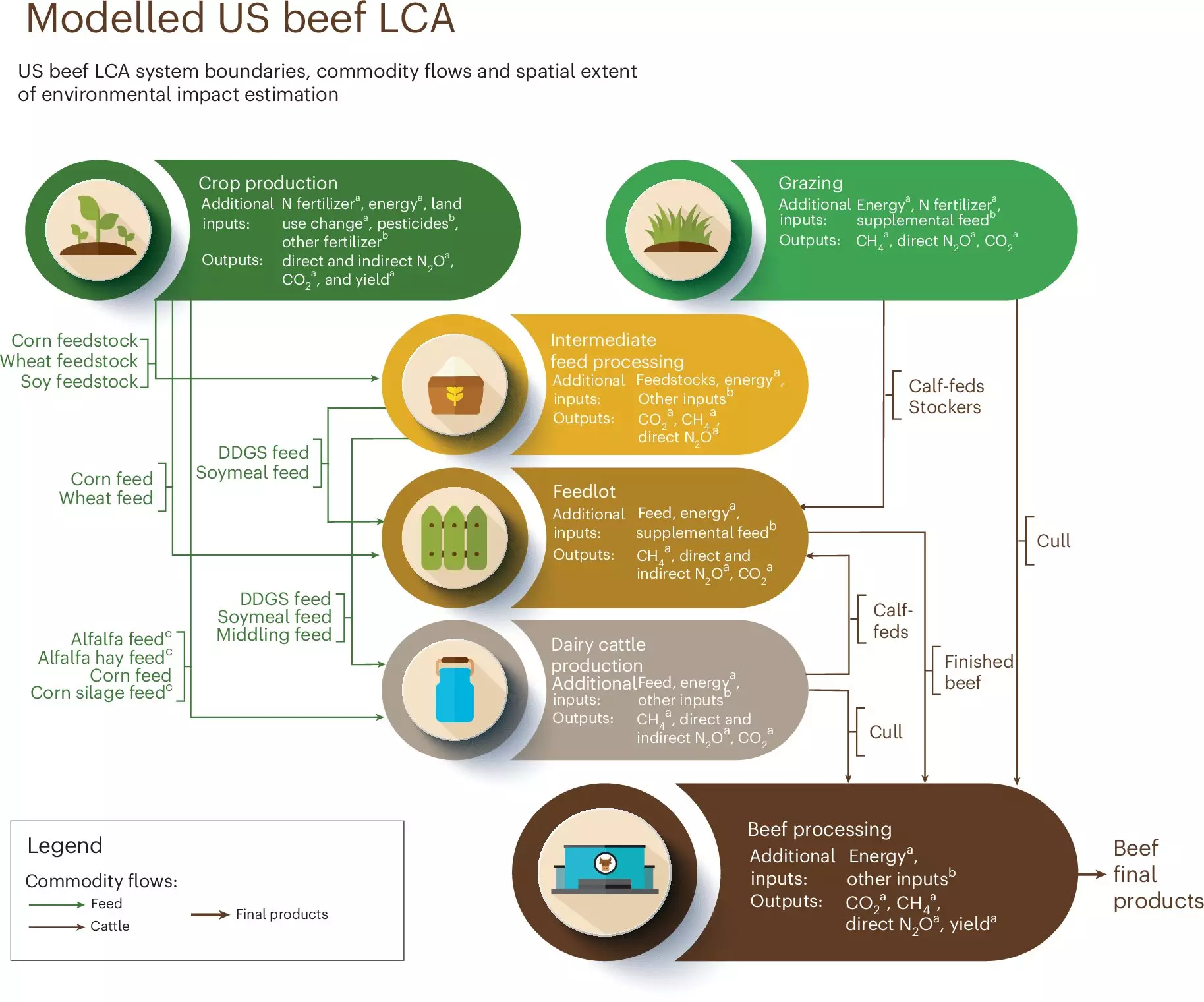Human-induced climate change has been predominantly driven by greenhouse gas emissions since the mid-20th century, with agriculture identified as a significant contributor. Among the various agricultural sectors, the U.S. beef industry stands out; it alone accounts for approximately 3.3% of the nation’s total emissions. Although collaborative efforts within the beef sector have led to some improvements over the past five decades, the intricate nature of the supply chain continues to hinder more substantial progress. Addressing this challenge demands innovative research and actionable strategies aimed at mitigating environmental impact, especially in the wake of increasing climate pressures.
A recent study published in the journal Nature Food, spearheaded by researchers at the University of Minnesota’s Institute on the Environment (IonE) in collaboration with The Nature Conservancy, presents a groundbreaking analysis of the U.S. beef industry’s environmental impacts. This study offers a comprehensive examination that not only assesses greenhouse gas emissions on a national scale but also provides a county-level analysis, pinpointing geographic emission hotspots within the supply chain. Notably, the beef industry produces nearly 258 million metric tons of greenhouse gases annually, with concentrated emissions stemming from feed production in the Great Plains and Midwest, and a more distributed pattern associated with grazing in the western states.
The researchers identified that a third of these emissions could potentially be reduced by adopting alternative practices across various stages of beef production, including grazing management, feed production, and processing. They meticulously analyzed 42 innovative practices, such as implementing cover crops and exploring alternative feed additives, which could lead to significant emissions reductions.
One of the major hurdles highlighted by the research is the complexity of the beef supply chain, making it challenging for industry stakeholders to adopt effective emission reduction strategies. Rylie Pelton, the lead author of the study, emphasized the need for a tailored approach that meets the specific geophysical characteristics of different regions. This localized strategy can empower beef processors by providing them with clear, actionable recommendations that directly target their operational settings.
The study advocates for an integrated understanding of both the ecological and economic aspects of beef production. For instance, the research identified opportunities in the Southeastern U.S. where integrating trees into pasturelands could serve as a means of carbon sequestration while maintaining sustainable grazing practices. Similarly, the Northern Great Plains presented viable options for rehabilitating degraded wetlands, contributing to both environmental recovery and sustainability.
The implications of this research extend beyond mere emission reductions; they signal a necessary shift towards sustainability being a fundamental component of the U.S. beef industry. Kris Johnson, co-author and director of The Nature Conservancy’s North America Agriculture program, underscored the importance of embedding sustainable practices into the core operations of beef production. By doing so, producers can ensure economic stability for their livelihoods while fostering a healthier ecosystem.
This proactive approach is crucial not only for meeting climate objectives but also for aligning with consumer expectations. Modern consumers are increasingly mindful of sustainability and environmental impact, and the beef industry must evolve to provide products that resonate with these values.
The research conducted by IonE exemplifies a vital step forward in identifying preemptive strategies that the U.S. beef industry can implement to lower greenhouse gas emissions effectively. As the findings illustrate, embracing sustainability within beef production is not merely an environmental imperative; it is essential for ensuring food security and economic viability.
Moving forward, it is critical for industry leaders, policymakers, and environmental organizations to engage collaboratively in this pursuit, ensuring that the recommendations laid out by the researchers are not just theoretical but actively put into practice. The future of the U.S. beef industry lies in its ability to combine economic goals with robust environmental stewardship, ultimately fostering a sustainable food system that benefits all stakeholders involved.

